Evaluating the anti-neuropathic effects of the thymol-loaded nanofibrous scaffold in a rat model of spinal cord injury
- PMID: 40255564
- PMCID: PMC12006068
- DOI: 10.3389/fphar.2025.1507397
Evaluating the anti-neuropathic effects of the thymol-loaded nanofibrous scaffold in a rat model of spinal cord injury
Abstract
Background: Spinal cord injury (SCI) is a debilitating condition characterized by partial or complete loss of motor and sensory function caused by mechanical trauma to the spinal cord. Novel therapeutic approaches are continuously explored to enhance spinal cord regeneration and functional recovery.
Purpose: In this study, we investigated the efficacy of the poly(vinyl alcohol) and chitosan (PVA/CS) scaffold loaded with different thymol concentrations (5, 10, and 15 wt%) in a rat compression model for SCI treatment compare to other (e.g., thymol and scaffold) control groups.
Results and discussion: The thymol-loaded scaffold exhibited a smooth surface and a three-dimensional nanofibrous structure with nanoscale diameter. The conducted analyses verified the successful incorporation of thymol into the scaffold and its high water absorption, porosity, and wettability attributes. Behavioral assessment of functional recovery showed improving sensory and locomotor impairment. Furthermore, histopathological examinations indicated the regenerative potential of the thymol-loaded nanofiber scaffold, by neuronal survival.
Conclusion: Therefore, these findings suggest that the thymol-loaded nanofibrous scaffolds have promising pharmacological activities for alleviating neuropathic pain and addressing complications induced by SCI.
Keywords: chitosan; motor activity; neuropathic pain; poly(vinyl alcohol); spinal cord injury; thymol-scaffold.
Copyright © 2025 Amirian, Mohammadi Pour, Maleki, Fakhri, Asgary, Farzaei and Echeverría.
Conflict of interest statement
The authors declare that the research was conducted in the absence of any commercial or financial relationships that could be construed as a potential conflict of interest. The author(s) declared that they were an editorial board member of Frontiers, at the time of submission. This had no impact on the peer review process and the final decision.
Figures

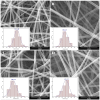


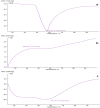
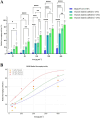



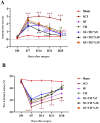

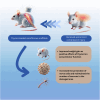
Similar articles
-
Wound healing promotion by flaxseed extract-loaded polyvinyl alcohol/chitosan nanofibrous scaffolds.Int J Biol Macromol. 2023 Feb 15;228:506-516. doi: 10.1016/j.ijbiomac.2022.12.228. Epub 2022 Dec 24. Int J Biol Macromol. 2023. PMID: 36572078
-
Nanofibrous poly(vinyl alcohol)/chitosan contained carbonated hydroxyapatite nanoparticles scaffold for bone tissue engineering.Mater Sci Eng C Mater Biol Appl. 2020 Feb;107:110347. doi: 10.1016/j.msec.2019.110347. Epub 2019 Oct 23. Mater Sci Eng C Mater Biol Appl. 2020. PMID: 31761152
-
Polycaprolactone/polysialic acid hybrid, multifunctional nanofiber scaffolds for treatment of spinal cord injury.Acta Biomater. 2018 Sep 1;77:15-27. doi: 10.1016/j.actbio.2018.06.038. Epub 2018 Jul 3. Acta Biomater. 2018. PMID: 30126591
-
Scaffold-facilitated locomotor improvement post complete spinal cord injury: Motor axon regeneration versus endogenous neuronal relay formation.Biomaterials. 2019 Mar;197:20-31. doi: 10.1016/j.biomaterials.2019.01.012. Epub 2019 Jan 7. Biomaterials. 2019. PMID: 30639547 Review.
-
[Review of the regeneration mechanism of complete spinal cord injury].Zhongguo Xiu Fu Chong Jian Wai Ke Za Zhi. 2018 Jun 15;32(6):641-649. doi: 10.7507/1002-1892.201805069. Zhongguo Xiu Fu Chong Jian Wai Ke Za Zhi. 2018. PMID: 29905039 Free PMC article. Review. Chinese.
References
-
- Andrei C., Zanfirescu A., Nițulescu G. M., Negreș S. (2022). Understanding the molecular mechanisms underlying the analgesic effect of ginger. Nutraceuticals 2, 384–403. 10.3390/nutraceuticals2040029 - DOI
LinkOut - more resources
Full Text Sources
Miscellaneous

